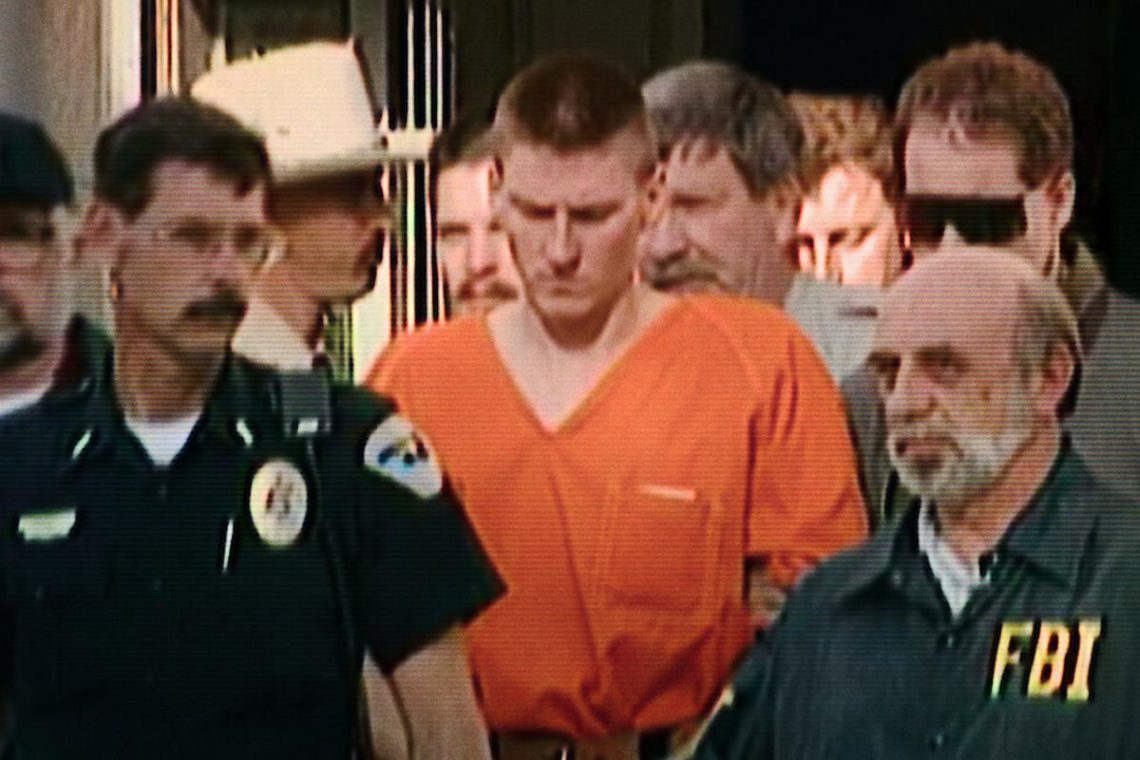Oklahoma City Bombing: American Terror (now on Netflix) arrives on the 30th anniversary of the worst act of domestic terrorism in American history. Itâs not the only documentary to chronicle the horrific events of April 19, 1993 â NatGeo series Oklahoma City Bombing: One Day in America recently debuted on Hulu and Marc Levin and Daphne Pinkersonâs An American Bombing premiered a year ago on HBO, essentially updating the filmmakersâ 1996 doc Oklahoma City: One Year Later while examining the social and political repercussions of the bombing. So the question is whether American Terror adds anything new or relevant to the story, or just rehashes the story most of us already know all too well.
OKLAHOMA CITY BOMBING: AMERICAN TERROR: STREAM IT OR SKIP IT?
The Gist: Amy Downs worked as a clerk at the credit union inside the Alfred P. Murrah Federal Building in Oklahoma City. One day, she brought her video camera to the office, filming friends and coworkers so she could show her mother where she works. A few days later, those cubicles and corridors no longer existed, and a bewildered Amy lay in a hospital bed, fielding phone calls from families of coworkers wondering if sheâd seen or knew anything about their missing loved ones. A massive bomb exploded at the Murrah, leaving Amy buried in the rubble for hours before rescuers found her, began to dig her out â and were forced to leave her there when a second bomb was spotted in the building. It was a false alarm. They returned and pulled her out, stunned but almost miraculously without serious injury.
Renee Moore worked as a bailiff in a courtroom a few blocks away from the Murrah building. Every day sheâd drop off her six-month-old son Tony at the daycare center in the Murrah, and would often visit him during her lunch hour. She spent countless hours fretting before authorities found Tonyâs body in the wreckage along with a number of other dead children. Dr. Carl Spengler had just finished a long, grueling shift in the emergency room when he joined a friend for breakfast at a diner, foregoing his usual routine of going home to rest. The explosion shook the restaurant. He rushed to the scene and began âmass casualty triageâ â determining which victims were treatable, and which were hopeless. To this day, heâs haunted by the memory of a child he couldnât help and the people who cursed at him for making that impossible decision.
These are three stories that director Greg Tillman weaves into the narrative of American Terror, which chronicles the events of April 19, 1995, when Timothy McVeigh, aided by Terry Nichols and Michael Fortier, left a rental truck full of explosives outside the Murrah and drove off, unaware the blast had killed 168 people, until he was sitting in a police station, watching a news report, after being arrested for weapons and license plate misdemeanors. Two years earlier, McVeigh was outraged at the U.S. government for the Waco disaster; six years later, McVeigh would be executed. Tillman interviews law enforcement officers, journalists, survivors and witnesses, who tell the story of this awful tragedy, and a few of the smaller stories within it.Â
What Movies Will It Remind You Of?: Alfie Allen headlines a 2024 fictionalized feature, McVeigh, a rather grim dramatization of the perpetratorâs days prior to the bombing. And American Terror has a similar style and tone to many other true-crime-ish Netflix documentaries, e.g. the recent The Twister: Caught in the Storm.
Performance Worth Watching: Thereâs no denying the power of Moore, Spengler and Downsâ first-person testimonies.
Memorable Dialogue: After McVeigh was arrested, Moore used to drive to the prison where he was being held and simply park outside the building. âIâd just sit out there in the dark, wondering how I could get in so I could hurt him.â
Sex and Skin: None.
Our Take: Remove the emotional accounts of people like Moore, Spengler and Downs, and American Terror would be the documentary version of a Wikipedia entry about the Oklahoma City Bombing. During a postscript, Tillman dedicates the film to the victims and survivors, so he clearly intends to pay homage to the people who suffered the most in the wake of this reprehensible terrorist act. Itâs a dutiful, well-meaning presentation of their stories, and even if the film suffers from tell-me-something-I-donât-know-ism, itâs a simple and effective collection of subjective and objective points-of-view, pieced together into an easily consumable 84-minute chronology of events.
Tillman doesnât stray from documentary formula at all â talking heads and archival footage make up the bulk of the narrative, with a few mildly unnecessary reenactments and AI/CG renderings concocted to fill in any visual blanks. American Terror doesnât go into detail like One Day in America, nor does it contextualize McVeighâs story within decades of far-right militia culture like the fascinating An American Bombing (which managed to land an interview with President Bill Clinton). Itâs almost alarmingly basic, a reiteration of events that works as an educational piece or, to be more cynical, an easily consumable chunk of content for interested parties who pony up for Netflix but not Hulu or Max. The film is so functional, you canât be too critical of it; its personal stories are also moving enough to make it a thin and derivative, but worthy capturing of the human condition amidst horrible tragedy.
Our Call: American Terrorâs pragmatic approach is unexceptional but still very watchable. STREAM IT.
John Serba is a freelance writer and film critic based in Grand Rapids, Michigan.
The post Stream It Or Skip It: ‘Oklahoma City Bombing: American Terror’ on Netflix, a Utilitarian Documentary Integrating a Few Moving Human Stories appeared first on Decider.




